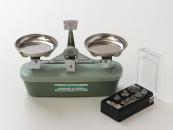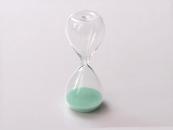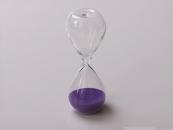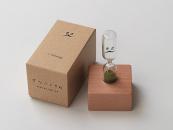- This Month's Tea - Konacha
- This Month's Tea - Tasting Sets
- Four Seasons of Green Tea
- Green Tea for Health
- How to Enjoy Green Tea
- History of Green Tea
- Benefits of Matcha
- Japanese Tea Ceremony
- Organic Tea Farm
- Celebration Gifts in Japan
- Choosing a Japanese Tea
- Choosing Tea Ware
- Traveling around Uji
- RAKU YAKI - Avantgarde to Tradition
- Shincha News Flash

- Recommend - Konacha (Limited)Premium quality/excellent value. Now Available!

- Mother's Day GiftsJapanese tea symbolizing a wish of good health and longevity

- Konacha (This Month's Tea)Excellent value by-product tea

- Matcha Bowls / Accessories (New & Limited)Modern sophisticated / traditional handcrafted

- Yunomi and Accessories (New & Limited)Modern sophisticated / traditional handcrafted

- [Limited] Snacks / Candy (Spring)Premium, Traditional & Modern
![[Limited] Snacks / Candy [Limited] Snacks / Candy](./images/seasonal_topics/Banner_Spring24.jpg)
Teapots & Cups / Supplies
All of our Teapots / Cups, and accessories for Gyokuro, Sencha, and other kinds of Japanese tea are carefully selected for their function, value, and style. We have a wide variety of items in porcelain, ceramic, and glass: handmade teapots, tea cups, accessories for preserving tea leaves, and much more.

Best Selling Items- Monthly
-
1
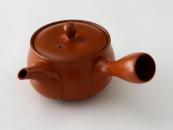 Kyusu (Teapot: 360ml)
US$34.00
Kyusu (Teapot: 360ml)
US$34.00
-
2
![[Try it!] Storage Clip for Tea Package (a set of three) [Try it!] Storage Clip for Tea Package (a set of three)](/images/upload/thumbnail/Storage_Clip_A01.jpg) [Try it!] Storage Clip for Tea Package (a set of three)
US$10.50
[Try it!] Storage Clip for Tea Package (a set of three)
US$10.50
-
3
![[New] SOUEN-KOH (Japanese Tea Incense: 12 sticks) [New] SOUEN-KOH (Japanese Tea Incense: 12 sticks)](/images/upload/thumbnail/SOUEN-KOH_A01.jpg) [New] SOUEN-KOH (Japanese Tea Incense: 12 sticks)
US$16.50
[New] SOUEN-KOH (Japanese Tea Incense: 12 sticks)
US$16.50
-
4
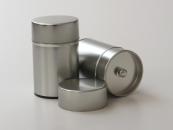 KIJICAN (airtight container: pair: capacity 150g)
US$23.00
KIJICAN (airtight container: pair: capacity 150g)
US$23.00
-
5
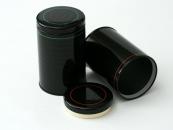 ITO URUSHI (airtight container: pair: capacity 150g each)
US$21.00
ITO URUSHI (airtight container: pair: capacity 150g each)
US$21.00
-
6
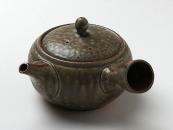 Earthenware Kyusu (Teapot: 360ml)
US$39.00
Earthenware Kyusu (Teapot: 360ml)
US$39.00
-
7
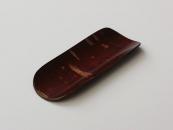 Tea Scoop YAMA ZAKURA (Sami)
US$8.50
Tea Scoop YAMA ZAKURA (Sami)
US$8.50
-
8
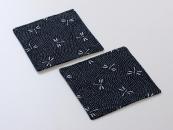 TONBO AIZOME Coaster (pair)
US$9.50
TONBO AIZOME Coaster (pair)
US$9.50
-
9
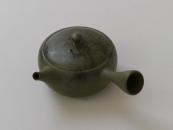 RYOKUDEI MOGAKE Kyusu (handcrafted: 300ml)
US$83.00
RYOKUDEI MOGAKE Kyusu (handcrafted: 300ml)
US$83.00
-
10
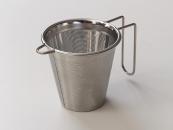 SS Strainer
US$20.00
SS Strainer
US$20.00
-
11
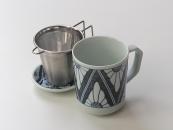 KIKU MON Strainer Mug (Mug: 250ml)
US$40.00
KIKU MON Strainer Mug (Mug: 250ml)
US$40.00
-
12
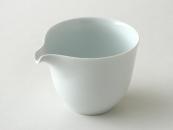 MANTEN Yuzamashi (Water Cooler: 325ml)
US$26.00
MANTEN Yuzamashi (Water Cooler: 325ml)
US$26.00
-
13
![[Limited] SHIGARAKI RURIYU Yunomi - pair (handcrafted) [Limited] SHIGARAKI RURIYU Yunomi - pair (handcrafted)](/images/upload/thumbnail/SHIGARAKI-RURIYU-Yunomi-pair_A01.jpg) [Limited] SHIGARAKI RURIYU Yunomi - pair (handcrafted)
US$125.00
[Limited] SHIGARAKI RURIYU Yunomi - pair (handcrafted)
US$125.00
-
14
![[Recommended] MATSUBA Yunomi (Teacup:pair:100ml each) [Recommended] MATSUBA Yunomi (Teacup:pair:100ml each)](/images/upload/thumbnail/MatsubaYunomi_A01.jpg) [Recommended] MATSUBA Yunomi (Teacup:pair:100ml each)
US$28.00
[Recommended] MATSUBA Yunomi (Teacup:pair:100ml each)
US$28.00
-
15
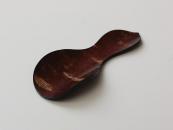 Tea Scoop HYOTAN (Sami)
US$12.00
Tea Scoop HYOTAN (Sami)
US$12.00
-
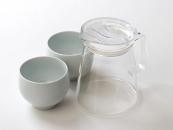 21051 US$63.00 Teapot CLEAR - Filter Top & MANTEN Yunomi set
21051 US$63.00 Teapot CLEAR - Filter Top & MANTEN Yunomi setThis Teapot and Yunomi set is specifically designed to be convenient and easy to use. This is not only a convenient and simple design but also sophisticated and stylish. You are surely able to enjoy both iced tea, hot tea and the beautiful color of tea in your green moment with this functional and fashionable set...

-
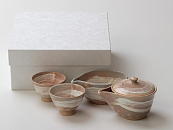 21322 US$184.00 KAGETSU HAKEME Hohin Set (handcrafted Tea Set)
21322 US$184.00 KAGETSU HAKEME Hohin Set (handcrafted Tea Set)KAGETSU HAKEME Hohin Set is very simple, but the artist has given great care to the details of the work. White HAKEME, which means brush line pattern in Japanese, both accents and balances the warm and natural reddish-brown color of this Hohin Set...

-
 26303 US$40.00 KIKU MON Strainer Mug (Mug: 250ml)
26303 US$40.00 KIKU MON Strainer Mug (Mug: 250ml)If you have this Strainer Mug, you can enjoy Japanese green tea anywhere without teapots and tea cups. It has a lid, which is convenient to steam the tea leaves during brewing, keep the tea warm, and use as a saucer to place the strainer upon while not in use...

-
![[Limited] KINURI SAKURA - pair (handcrafted Teacup) [Limited] KINURI SAKURA - pair (handcrafted Teacup)](/images/upload/thumbnail/KINURI-SAKURA-pair_A01.jpg) Limited 22223 US$362.00 KINURI SAKURA - pair (handcrafted Teacup)
Limited 22223 US$362.00 KINURI SAKURA - pair (handcrafted Teacup)KINURI means yellow-lacquered, and SAKURA means cherry blossom in Japanese. Cherry blossoms are one of the most beloved flowers in Japan. They are elegantly and vividly depicted in this work. The cherry blossom is not only a symbol of spring, but also the national flower of Japan. The cherry blossoms on this teacup are framed in gold, which adds to their elegance...

-
![[Limited] KINURI SAKURA (handcrafted Teacup: 160ml) [Limited] KINURI SAKURA (handcrafted Teacup: 160ml)](/images/upload/thumbnail/KINURI-SAKURA_A01.jpg) Limited 22224 US$208.00 KINURI SAKURA (handcrafted Teacup: 160ml)
Limited 22224 US$208.00 KINURI SAKURA (handcrafted Teacup: 160ml)KINURI means yellow-lacquered, and SAKURA means cherry blossom in Japanese. Cherry blossoms are one of the most beloved flowers in Japan. They are elegantly and vividly depicted in this work. The cherry blossom is not only a symbol of spring, but also the national flower of Japan. The cherry blossoms on this teacup are framed in gold, which adds to their elegance...

-
![[Limited] HANA TSUDOI - pair (FUJISAKURA / RAN, handcrafted) [Limited] HANA TSUDOI - pair (FUJISAKURA / RAN, handcrafted)](/images/upload/thumbnail/HANA-TSUDOI-pair-FUJIZAKURA-RAN_A01.jpg) Limited 22507 US$362.00 HANA TSUDOI - pair (FUJISAKURA / RAN, handcrafted)
Limited 22507 US$362.00 HANA TSUDOI - pair (FUJISAKURA / RAN, handcrafted)HANA TSUDOI means flower gathering in Japanese. There are twelve tea cups in this series, and different flowers from season to season are decorated in each cup. HANA TSUDOI tea cup is one of the most popular in the advanced line at Tohan Kiln...

-
![[Limited] SEKKA SOUKA ZU - pair(HAKU BAI / KIKU, handcrafted) [Limited] SEKKA SOUKA ZU - pair(HAKU BAI / KIKU, handcrafted)](/images/upload/thumbnail/SEKKA-SOUKA-ZU-pair-HAKU-BAI-KIKU_A01.jpg) Limited 23016 US$179.00 SEKKA SOUKA ZU - pair(HAKU BAI / KIKU, handcrafted)
Limited 23016 US$179.00 SEKKA SOUKA ZU - pair(HAKU BAI / KIKU, handcrafted)HAKU BAI means white color UME plum. Plum, a traditional symbol of wintertime or early spring in Japan, is painted elegantly on the surface. KIKU means chrysanthemum in Japanese. Chrysanthemum is one of the most well-known flowers of Japan, and can be regarded as a noble flower...

-
![[Limited] SEKKA SOUKA ZU - HAKU BAI (handcrafted: 200ml) [Limited] SEKKA SOUKA ZU - HAKU BAI (handcrafted: 200ml)](/images/upload/thumbnail/SEKKA-SOUKA-ZU-HAKU-BAI_A01.jpg) Limited 23017 US$97.00 SEKKA SOUKA ZU - HAKU BAI (handcrafted: 200ml)
Limited 23017 US$97.00 SEKKA SOUKA ZU - HAKU BAI (handcrafted: 200ml)HAKU BAI means white color UME plum. Plum, a traditional symbol of wintertime or early spring in Japan, is painted elegantly on the surface. Some plum flowers are still in bud and about to bloom, which is the precise moment of bearing new life...

-
![[Limited] SEKKA SOUKA ZU - KIKU (handcrafted: 200ml) [Limited] SEKKA SOUKA ZU - KIKU (handcrafted: 200ml)](/images/upload/thumbnail/SEKKA-SOUKA-ZU-KIKU_A01.jpg) Limited 23018 US$97.00 SEKKA SOUKA ZU - KIKU (handcrafted: 200ml)
Limited 23018 US$97.00 SEKKA SOUKA ZU - KIKU (handcrafted: 200ml)KIKU means chrysanthemum in Japanese. Chrysanthemum is one of the most well-known flowers of Japan, and can be regarded as a noble flower. It also symbolizes longevity, and the flower pattern of chrysanthemum is used everywhere in Japan...

-
![[Limited] KOHZANJI NAGA Yunomi - pair (handcrafted Teacup) [Limited] KOHZANJI NAGA Yunomi - pair (handcrafted Teacup)](/images/upload/thumbnail/KOHZANJI-NAGA-Yunomi-pair_A01.jpg) Limited 23101 US$179.00 KOHZANJI NAGA Yunomi - pair (handcrafted Teacup)
Limited 23101 US$179.00 KOHZANJI NAGA Yunomi - pair (handcrafted Teacup)KOHZANJI CHOHJYU JINBUTSU GIGA is a painting of playing animals imitating people. Frogs, rabbits, monkeys, and other animals are humorously depicted firing crossbows, Sumo wrestling, swimming, and doing other human activities...

-
![[Limited] KOHZANJI NAGA Yunomi (handcrafted Teacup: 230ml) [Limited] KOHZANJI NAGA Yunomi (handcrafted Teacup: 230ml)](/images/upload/thumbnail/KOHZANJI-NAGA-Yunomi_A01.jpg) Limited 23102 US$97.00 KOHZANJI NAGA Yunomi (handcrafted Teacup: 230ml)
Limited 23102 US$97.00 KOHZANJI NAGA Yunomi (handcrafted Teacup: 230ml)KOHZANJI CHOHJYU JINBUTSU GIGA is a painting of playing animals imitating people. Frogs, rabbits, monkeys, and other animals are humorously depicted firing crossbows, Sumo wrestling, swimming, and doing other human activities...

-
![[Limited] RYOH / MURASAKINO - pair (handcrafted) [Limited] RYOH / MURASAKINO - pair (handcrafted)](/images/upload/thumbnail/RYOH-MURASAKINO-pair_A01.jpg) Limited 23704 US$143.00 RYOH / MURASAKINO - pair (handcrafted)
Limited 23704 US$143.00 RYOH / MURASAKINO - pair (handcrafted)The characteristics of glaze are well described on both teacups. The pale sky blue color glaze coated on the outside of the RYOH teacup contrasts well with the transparent glaze inside the teacup. The purple color glaze of the MURASAKINO teacup creates a graceful atmosphere...

-
![[Limited] RYOH (handcrafted Teacup: 170ml) [Limited] RYOH (handcrafted Teacup: 170ml)](/images/upload/thumbnail/RYOH-s_A01.jpg) Limited 23705 US$82.00 RYOH (handcrafted Teacup: 170ml)
Limited 23705 US$82.00 RYOH (handcrafted Teacup: 170ml)RYOH of this name means cool in Japanese. As the name indicates, this teacup evokes a feeling of coolness. The pale sky blue color glaze is gracefully coated on the outside of the teacup. Not only the glaze but also Shohoh’s techniques create the graceful aura of this teacup...

-
![[Limited] MURASAKINO (handcrafted Teacup: 170ml) [Limited] MURASAKINO (handcrafted Teacup: 170ml)](/images/upload/thumbnail/MURASAKINO-s_A01.jpg) Limited 23706 US$82.00 MURASAKINO (handcrafted Teacup: 170ml)
Limited 23706 US$82.00 MURASAKINO (handcrafted Teacup: 170ml)MURASAKI means purple, and NO means fields in Japanese. Autumn wild flowers and plants are elaborately decorated in the autumn purple field. Purple color KOHCHI glaze, which is one of the traditional techniques, coats the exterior teacup...

-
![[Limited] SOMETSUKE SOHKA TAMA - pair (AJISAI / TESSEN) [Limited] SOMETSUKE SOHKA TAMA - pair (AJISAI / TESSEN)](/images/upload/thumbnail/SOMETSUKE-TAMA-pair-AJISAI-TESSEN_A01.jpg) Limited 23866 US$126.00 SOMETSUKE SOHKA TAMA - pair (AJISAI / TESSEN)
Limited 23866 US$126.00 SOMETSUKE SOHKA TAMA - pair (AJISAI / TESSEN)SOMETSUKE refers to traditional Japanese ceramics that have been painted with a blue pattern mainly made of cobalt oxide over a white base glaze and then coated with transparent glaze and baked at a high temperature. It's simple yet sophisticated and easy to use all year round...

-
![[Limited] IRODORI SAKURA - pair (handcrafted Teacup) [Limited] IRODORI SAKURA - pair (handcrafted Teacup)](/images/upload/thumbnail/IRODORI-SAKURA-pair_A01.jpg) Limited 24279 US$108.00 IRODORI SAKURA - pair (handcrafted Teacup)
Limited 24279 US$108.00 IRODORI SAKURA - pair (handcrafted Teacup)IRODORI of this name means color or spice and SAKURA means cherry blossoms in Japanese. Three colors of SAKURA cherry blossoms, which are white, blue and pale pink, elegantly bloom inside and outside the teacup. Each petal is painted with great care...

-
![[Limited] IRODORI SAKURA (handcrafted Teacup: 180ml) [Limited] IRODORI SAKURA (handcrafted Teacup: 180ml)](/images/upload/thumbnail/IRODORI-SAKURA_A01.jpg) Limited 24280 US$62.00 IRODORI SAKURA (handcrafted Teacup: 180ml)
Limited 24280 US$62.00 IRODORI SAKURA (handcrafted Teacup: 180ml)IRODORI of this name means color or spice and SAKURA means cherry blossoms in Japanese. Three colors of SAKURA cherry blossoms, which are white, blue and pale pink, elegantly bloom inside and outside the teacup. Each petal is painted with great care...

-
![[Limited] UKI HANA BUDOH - pair (handcrafted Teacup) [Limited] UKI HANA BUDOH - pair (handcrafted Teacup)](/images/upload/thumbnail/UKIHANABUDOH-pair_A01.jpg) Limited 24613 US$93.00 UKI HANA BUDOH - pair (handcrafted Teacup)
Limited 24613 US$93.00 UKI HANA BUDOH - pair (handcrafted Teacup)UKI HANA BUDOH means floating grapes. The name was inspired by the three-dimensionally expressed grapes on the surface of this teacup. Grapes have appeared in Japanese literature and WAKA poems since ancient times and have been a favorite motif among tea masters...

-
![[Limited] UKI HANA BUDOH (handcrafted Teacup: 180ml) [Limited] UKI HANA BUDOH (handcrafted Teacup: 180ml)](/images/upload/thumbnail/UKIHANABUDOH_A01.jpg) Limited 24614 US$53.00 UKI HANA BUDOH (handcrafted Teacup: 180ml)
Limited 24614 US$53.00 UKI HANA BUDOH (handcrafted Teacup: 180ml)UKI HANA BUDOH means floating grapes. The name was inspired by the three-dimensionally expressed grapes on the surface of this teacup. Grapes have appeared in Japanese literature and WAKA poems since ancient times and have been a favorite motif among tea masters...

-
![[Limited] BIZEN HITOKUCHI Yunomi (handcrafted Teacup: 130ml) [Limited] BIZEN HITOKUCHI Yunomi (handcrafted Teacup: 130ml)](/images/upload/thumbnail/BIZEN_HITOKUCHI_Y_A01.jpg) Limited 26204 US$42.00 BIZEN HITOKUCHI Yunomi (handcrafted Teacup: 130ml)
Limited 26204 US$42.00 BIZEN HITOKUCHI Yunomi (handcrafted Teacup: 130ml)BIZEN HITOKUCHI Yunomi is one of the most notable products in our teacup lineup, with its earthen texture and scarlet color of flame. With this teacup in your hand, we have no doubt that your green moment will be further enhanced...

-
![[Limited] TETSUSAN SENBORI Yunomi - pair (handcrafted Teacup) [Limited] TETSUSAN SENBORI Yunomi - pair (handcrafted Teacup)](/images/upload/thumbnail/TETSUSAN-SENBORI-Yunomi-pair_A01.jpg) Limited 26205 US$75.00 TETSUSAN SENBORI Yunomi - pair (handcrafted Teacup)
Limited 26205 US$75.00 TETSUSAN SENBORI Yunomi - pair (handcrafted Teacup)TETSU means iron, and SAN means scatter. As the name expresses, you can see black dots formed when the iron content in the clay appears on the surface of the cup. This tea cup is made from clay that contains iron and is the potteries' original blend mainly collected in Shigaraki...

-
 26303 US$40.00 KIKU MON Strainer Mug (Mug: 250ml)
26303 US$40.00 KIKU MON Strainer Mug (Mug: 250ml)If you have this Strainer Mug, you can enjoy Japanese green tea anywhere without teapots and tea cups. It has a lid, which is convenient to steam the tea leaves during brewing, keep the tea warm, and use as a saucer to place the strainer upon while not in use...

-
![[Limited] HANA SOUKA - pair (SAKURA / FUJI) [Limited] HANA SOUKA - pair (SAKURA / FUJI)](/images/upload/thumbnail/HANA-SOHKA-SAKURA-FUJI_A01.jpg) Limited 27513 US$87.00 HANA SOUKA - pair (SAKURA / FUJI)
Limited 27513 US$87.00 HANA SOUKA - pair (SAKURA / FUJI)These Yunomi are characterized by the harmony between the light pink of the SAKURA cherry blossoms, the light purple of the FUJI Japanese wisteria, and the refined white background. The atmosphere is very light and airy, like the soft breeze that blows in spring. Both of them are simple yet modern impressions, and their simplicity warms our heart...

-
![[Limited] KOBIKI TSURU KAME (handcrafted Teacup:pair) [Limited] KOBIKI TSURU KAME (handcrafted Teacup:pair)](/images/upload/thumbnail/KOBIKI-TSURU-KAME-Yunomi_A01.jpg) Limited 27711 US$68.00 KOBIKI TSURU KAME (handcrafted Teacup:pair)
Limited 27711 US$68.00 KOBIKI TSURU KAME (handcrafted Teacup:pair)KOBIKI of this name means glazing white color on the pottery, TSURU means crane, and KAME means turtle in Japanese. KOBIKI is one of the Japanese traditional pottery techniques, coating with glaze made from white clay. Unevenness of white color KOBIKI glaze coating creates the WABI SABI atmosphere...

-
![[Top Choice!] SOME KAMON Yunomi (handcrafted Teacup: pair) [Top Choice!] SOME KAMON Yunomi (handcrafted Teacup: pair)](/images/upload/thumbnail/KAMON_A01.jpg) Top Choice! 27712 US$68.00 SOME KAMON Yunomi (handcrafted Teacup: pair)
Top Choice! 27712 US$68.00 SOME KAMON Yunomi (handcrafted Teacup: pair)Just at first glance, you may possibly feel that this Yunomi is plain and simple. However, the artist has achieved sophistication without ostentatious garnish. In addition, the thin and lightweight porcelain enhances the good flavor of tea...

-
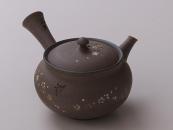 28141 US$189.00 CHOH to SAKURA Kyusu (handcrafted: 300ml)
28141 US$189.00 CHOH to SAKURA Kyusu (handcrafted: 300ml)This Kyusu gives the impression of a spring breeze with butterflies and cherry blossom petals. You will certainly feel that the room and atmosphere around this Kyusu are calm, relaxed, and leisurely. To consider the effort and technique on this Kyusu, this price is absolutely reasonable...

-
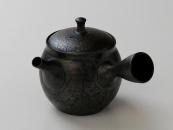 28151 US$128.00 TENMOKU Kyusu (handcrafted: 300ml)
28151 US$128.00 TENMOKU Kyusu (handcrafted: 300ml)TENMOKU is an iron glaze traditionally known for its impenetrable and elusive nature. It was said that if an artisan tried to pursue TENMOKU glaze, they would become insolvent. Unique pattern on the surface of the teapot is similar to the color inside a sea shell and seven bright color changes occur according the position from which it is viewed...

-
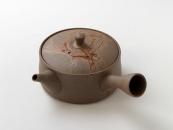 28161 US$118.00 KITTACHI MOGAKE Kyusu (handcrafted: 350ml)
28161 US$118.00 KITTACHI MOGAKE Kyusu (handcrafted: 350ml)The technique called MOGAKE is used for this Kyusu. MO means seaweed and GAKE means wrapping in Japanese. As the name suggests, this Kyusu is fired in the kiln while wrapped with seaweed. Salt contained in the seaweed creates the unique color pattern due to the chemical reaction...

-
![[New] SHIROTSUCHI Kyusu - FUJIGATA (handcrafted: 300ml) [New] SHIROTSUCHI Kyusu - FUJIGATA (handcrafted: 300ml)](/images/upload/thumbnail/SHIROTSUCHI_Kyusu_FUJIGATA_A01.jpg) New 28171 US$103.00 SHIROTSUCHI Kyusu - FUJIGATA (handcrafted: 300ml)
New 28171 US$103.00 SHIROTSUCHI Kyusu - FUJIGATA (handcrafted: 300ml)SHIROTSUCHI refers to the white color of this Kyusu. Usually, Kyusu are SHUDEI red, brown or gray, but this Kyusu has a mild white color. This color was developed to show the beautiful green color of tea. Its whiteness, developed after about two years of trial and error, is unmatched by any other Kyusu. The mountain shape of the Kyusu and its characteristic white color harmonize beautifully to create a sense of gentleness and charm...

-
![[New] KUROTSUCHI Kyusu - TSUTSUGATA (handcrafted: 300ml) [New] KUROTSUCHI Kyusu - TSUTSUGATA (handcrafted: 300ml)](/images/upload/thumbnail/KUROTSUCHI_Kyusu_TSUTSUGATA_A01.jpg) New 28172 US$103.00 KUROTSUCHI Kyusu - TSUTSUGATA (handcrafted: 300ml)
New 28172 US$103.00 KUROTSUCHI Kyusu - TSUTSUGATA (handcrafted: 300ml)KUROTSUCHI refers to the black color of this teapot. Normally, most teapots are SHUDEI red or brown, but this teapot has a simple matte black color (grayish black). This color is produced by sealing the kiln at high temperatures and incomplete combustion with little oxygen. The carbon generated from the fuel in the kiln is absorbed by the Kyusu, resulting in a black color...

-
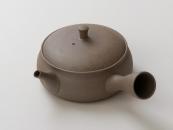 28173 US$103.00 YAKISHIME HIRAGATA Kyusu (handcrafted: 300ml)
28173 US$103.00 YAKISHIME HIRAGATA Kyusu (handcrafted: 300ml)This Kyusu has a unique color, texture and distinctive form. The warm earthen color and cute flat shape are wonderfully matched and bring an elegant and sophisticated atmosphere. It is very time-consuming to produce this Kyusu and expert skills are required. This unique Kyusu teapot, created by a master potter, is sure to fascinate you...

-
 28181 US$83.00 RYOKUDEI MOGAKE Kyusu (handcrafted: 300ml)
28181 US$83.00 RYOKUDEI MOGAKE Kyusu (handcrafted: 300ml)This Kyusu has a unique green color and texture. The green color and rounded shape are wonderfully matched and bring an elegant and sophisticated atmosphere. It is very time-consuming to produce this Kyusu and expert skills are required. This unique teapot created by skilled potters will surely fascinate you...

-
 29301 US$20.00 SS Strainer
29301 US$20.00 SS StrainerIts columnar shape and wide bottom create enough space so the tea leaves can fully expand during brewing to flavor the tea, providing almost the same taste as brewing by Kyusu teapot. It has a handle, which makes it very easy to use. With this strainer, you can brew our genuine green tea three times, which is also the same as with a Kyusu teapot...

-
![[New] HORAKU (Roasting pan for making Houjicha) [New] HORAKU (Roasting pan for making Houjicha)](/images/upload/thumbnail/HORAKU_A01.jpg) New 29011 US$43.00 HORAKU (Roasting pan for making Houjicha)
New 29011 US$43.00 HORAKU (Roasting pan for making Houjicha)HORAKU is a pan for making Houjicha by roasting tea leaves. Houjicha is made by roasting tea leaves over heat. It is a brown tea with a toasted nutty flavor. Houjicha is ideal for those who would like to try Japanese tea for the first time. ...

-
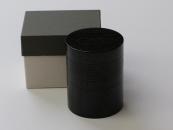 29065 US$110.00 KEYAKI KURO MEHAJIKI (handcrafted container; capacity 60g)
29065 US$110.00 KEYAKI KURO MEHAJIKI (handcrafted container; capacity 60g)The wood is from the Zelkova tree, known as KEYAKI in Japan. Japanese artisans use KEYAKI for traditional wooden lacquer because the wood is strong and the grain is quite beautiful. KURO means black, and MEHAJIKI is one of the craft techniques used to paint lacquer. The glossy and deep black color evokes a noble and majestic atmosphere...

-
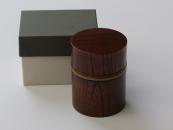 29066 US$105.00 KEYAKI KOMANURI (handcrafted container; capacity 60g)
29066 US$105.00 KEYAKI KOMANURI (handcrafted container; capacity 60g)The stripe design on this tea container is called KOMA NURI in Japanese. KOMA means a toy spinning top, and NURI means painting in Japanese. KOMA is a traditional toy, played with during the New Year holiday celebration in Japan, and is said to be an auspicious item...

-
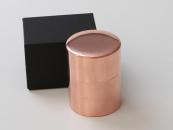 29071 US$53.00 DOHKAN Copper Chazutsu for 100g tea (handcrafted container)
29071 US$53.00 DOHKAN Copper Chazutsu for 100g tea (handcrafted container)This DOHKAN Copper Chazutsu is handmade container for tea leaves which we Hibiki-an specially order for our customers. Copper container is very suitable for the preservation of tea leaves since this is high air-tightness and protected against moisture, and copper itself has an antibacterial effect...

-
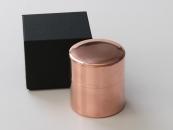 29072 US$43.00 DOHKAN Copper Chazutsu for 40g tea (handcrafted container)
29072 US$43.00 DOHKAN Copper Chazutsu for 40g tea (handcrafted container)This Copper Matcha Container is handmade container for Matcha which we Hibiki-an specially order for our customers. Copper container is very suitable for the preservation of Matcha powder since this is high air-tightness and protected against moisture, and copper itself has an antibacterial effect...

-
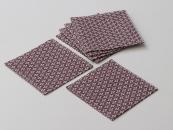 29134 US$22.50 TAKEDABISHI Coaster Value Set (6 Coasters)
29134 US$22.50 TAKEDABISHI Coaster Value Set (6 Coasters)This is a value set of 6 TAKEDABISHI coasters. With this set, you receive a special value: 6 coasters for the price of 4! TAKEDABISHI is the crest of TAKEDA family, which is one of the famous and strong military families during the warring states period in Japan. BISHI means diamond-shaped pattern...

-
![[New] TSUCHIME Red Copper Tea Scoop (Sami) [New] TSUCHIME Red Copper Tea Scoop (Sami)](/images/upload/thumbnail/TSUCHIME_Red_Copper_Tea_Scoop_(Sami)_A01.jpg) New 29151 US$28.00 TSUCHIME Red Copper Tea Scoop (Sami)
New 29151 US$28.00 TSUCHIME Red Copper Tea Scoop (Sami)Tea Scoop is very useful for measuring tea leaves from Chazutsu or other tea container and when placing tea leaves into the Kyusu teapot. This SAMI has a hammered pattern called TSUCHIME, which gives it a luxurious feel. It also brings a traditional Japanese atmosphere to tea time...

-
 29152 US$12.00 Tea Scoop HYOTAN (Sami)
29152 US$12.00 Tea Scoop HYOTAN (Sami)Our Tea Scoop is very useful for measuring tea leaves from Chazutsu or other tea container and when placing tea leaves into the Kyusu teapot. HYOTAN, which means calabash (bottle gourd) in Japanese, has been a traditional good luck charm since ancient times in Japan...

-
 29153 US$8.50 Tea Scoop YAMA ZAKURA (Sami)
29153 US$8.50 Tea Scoop YAMA ZAKURA (Sami)Our Tea Scoop is very useful for measuring tea leaves from Chazutsu or other tea container and when placing tea leaves into the Kyusu teapot. YAMA ZAKURA means mountain cherry blossom in Japanese. The surface of this Tea Scoop is covered with mountain cherry bark, which is polished to make a smooth texture...

-
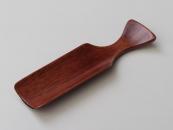 29155 US$7.50 Tea Scoop HAGOITA (Sami)
29155 US$7.50 Tea Scoop HAGOITA (Sami)Our Tea Scoop is very useful for measuring tea leaves from Chazutsu or other tea container and when placing tea leaves into the Kyusu teapot. HAGOITA is a wooden paddle used in HANETSUKI Japanese battledore, a traditional game historically played on auspicious occasions like New Year's holiday in Japan...

-
 29301 US$20.00 SS Strainer
29301 US$20.00 SS StrainerIts columnar shape and wide bottom create enough space so the tea leaves can fully expand during brewing to flavor the tea, providing almost the same taste as brewing by Kyusu teapot. It has a handle, which makes it very easy to use. With this strainer, you can brew our genuine green tea three times, which is also the same as with a Kyusu teapot...

-
![[Try it!] Storage Clip for Tea Package (a set of three) [Try it!] Storage Clip for Tea Package (a set of three)](/images/upload/thumbnail/Storage_Clip_A01.jpg) Try it! 29321 US$10.50 Storage Clip for Tea Package (a set of three)
Try it! 29321 US$10.50 Storage Clip for Tea Package (a set of three)This clip is suitable for closing the tea package for storage of daily use tea leaves. The way to use this clip is to fasten the tea package with it, as shown in the picture. This clip is not only functional but also stylish. Beautiful and delicate designs of traditional Japanese scenes and flowers decorate each clip. You will enjoy three designs...

-
29341 US$28.50 1-Minute SUNADOKEI (handcrafted sandglass)
This sandglass is a 1-minute tea timer. Pale green color sand tells you when 1 minute has passed. The sand inside was designed to be similar to the color of fine tea. Japanese green tea should be brewed for a specific length of time for ideal flavor. Sencha should brew for 1 minute, and Gyokuro should brew for 1.5 to 2 minutes.

-
29342 US$29.50 2-Minute SUNADOKEI (handcrafted sandglass)
This sandglass is a 2-minute tea timer. Purple color sand tells you when 2 minutes have passed. In the 7th century in Japan, purple was the color of the highest rank in a system of status. recognized as a color that gives the impression of nobility and elegance. 2 minutes is the best time to brew gyokuro, the highest grade of Japanese green tea. Japanese green tea should be brewed for a specific length of time for ideal flavor. Sencha should brew for 1 minute, and Gyokuro should brew for 1.5 to 2 minutes.









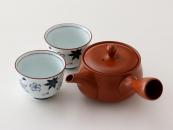
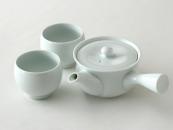

![[New] Earthenware Kyusu & TETSUSAN Yunomi set [New] Earthenware Kyusu & TETSUSAN Yunomi set](/images/upload/thumbnail/Earthenware Kyusu & TETSUSAN Yunomi set_A01.jpg)
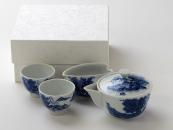
![[Limited] SOMETSUKE SOHKA TAMA - AJISAI (200ml) [Limited] SOMETSUKE SOHKA TAMA - AJISAI (200ml)](/images/upload/thumbnail/SOMETSUKE-TAMA-AJISAI_A01.jpg)
![[Limited] SOMETSUKE SOHKA TAMA - TESSEN (200ml) [Limited] SOMETSUKE SOHKA TAMA - TESSEN (200ml)](/images/upload/thumbnail/SOMETSUKE-TAMA-TESSEN_A01.jpg)
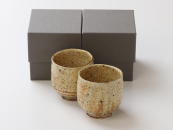
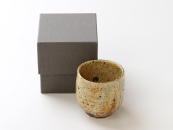
![[Limited] SHIGARAKI RURIYU Yunomi (handcrafted 130ml) [Limited] SHIGARAKI RURIYU Yunomi (handcrafted 130ml)](/images/upload/thumbnail/SHIGARAKI-RURIYU-Yunomi_A01.jpg)
![[Limited] MISHIMA KARAKUSA Yunomi - pair (handcrafted Teacup [Limited] MISHIMA KARAKUSA Yunomi - pair (handcrafted Teacup](/images/upload/thumbnail/MISHIMA-KARAKUSA-pair_A01.jpg)
![[Limited] MISHIMA KARAKUSA Yunomi (handcrafted Teacup: 180ml) [Limited] MISHIMA KARAKUSA Yunomi (handcrafted Teacup: 180ml)](/images/upload/thumbnail/MISHIMA-KARAKUSA_A01.jpg)
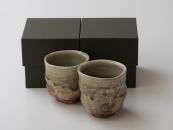
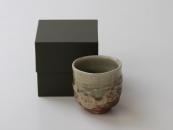
![[Limited] KUSHIME INKA Yunomi - White - pair (handcrafted) [Limited] KUSHIME INKA Yunomi - White - pair (handcrafted)](/images/upload/thumbnail/KUSHIME-INKA-White-pair_A01.jpg)
![[Limited] KUSHIME INKA Yunomi - White (handcrafted: 120ml) [Limited] KUSHIME INKA Yunomi - White (handcrafted: 120ml)](/images/upload/thumbnail/KUSHIME-INKA-White_A01.jpg)
![[Limited] BIZEN HITOKUCHI Yunomi - pair (handcrafted) [Limited] BIZEN HITOKUCHI Yunomi - pair (handcrafted)](/images/upload/thumbnail/BIZEN_HITOKUCHI_pair_A01.jpg)
![[Limited] TETSUSAN SENBORI Yunomi (handcrafted Teacup 180ml) [Limited] TETSUSAN SENBORI Yunomi (handcrafted Teacup 180ml)](/images/upload/thumbnail/TETSUSAN-SENBORI-Yunomi_A01.jpg)
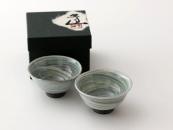
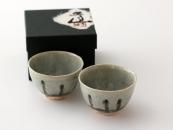
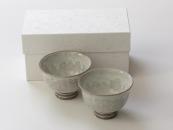
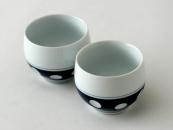
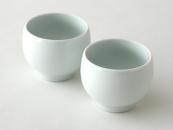
![[Recommended] Yunomi (Teacup:pair:100ml each) [Recommended] Yunomi (Teacup:pair:100ml each)](/images/upload/thumbnail/Yunomi_A01.jpg)
![[Seasonal] Iced Teapot (1,000ml) [Seasonal] Iced Teapot (1,000ml)](/images/upload/thumbnail/IcedTeapot_A01.jpg)
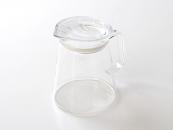
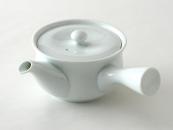
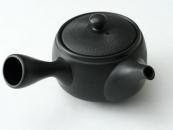
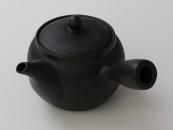
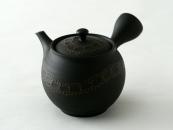
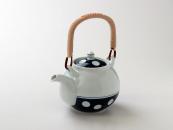
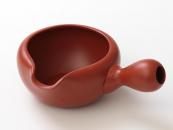
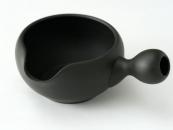
![[New] CHAKOHRO (tea incense burner) [New] CHAKOHRO (tea incense burner)](/images/upload/thumbnail/CHAKOHRO_A01.jpg)
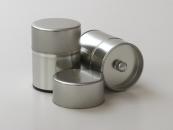
![[New] TSUCHIME Red Copper Chazutsu 150g (premium container) [New] TSUCHIME Red Copper Chazutsu 150g (premium container)](/images/upload/thumbnail/TSUCHIME_Red_Copper_Chazutsu_A01.jpg)
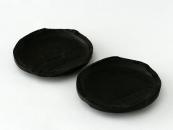
![[New] TSUCHIME Red Copper Chataku (premium saucer: pair) [New] TSUCHIME Red Copper Chataku (premium saucer: pair)](/images/upload/thumbnail/TSUCHIME_Red_Copper_Chataku_A01.jpg)
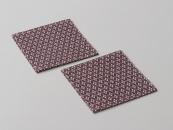
![[New] OMOTENASHI BON (traditional wooden tray) [New] OMOTENASHI BON (traditional wooden tray)](/images/upload/thumbnail/OMOTENASHI_BON_A01.jpg)
![[New] TWISTEA Plus (Twin cap bottle: 400ml) [New] TWISTEA Plus (Twin cap bottle: 400ml)](/images/upload/thumbnail/TWISTEA-Plus_A01.jpg)
